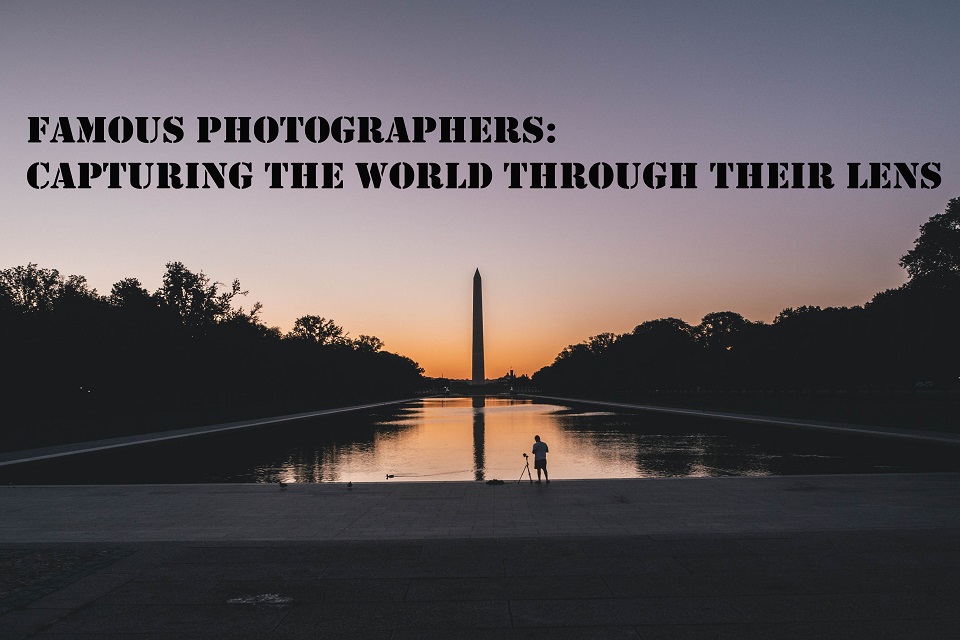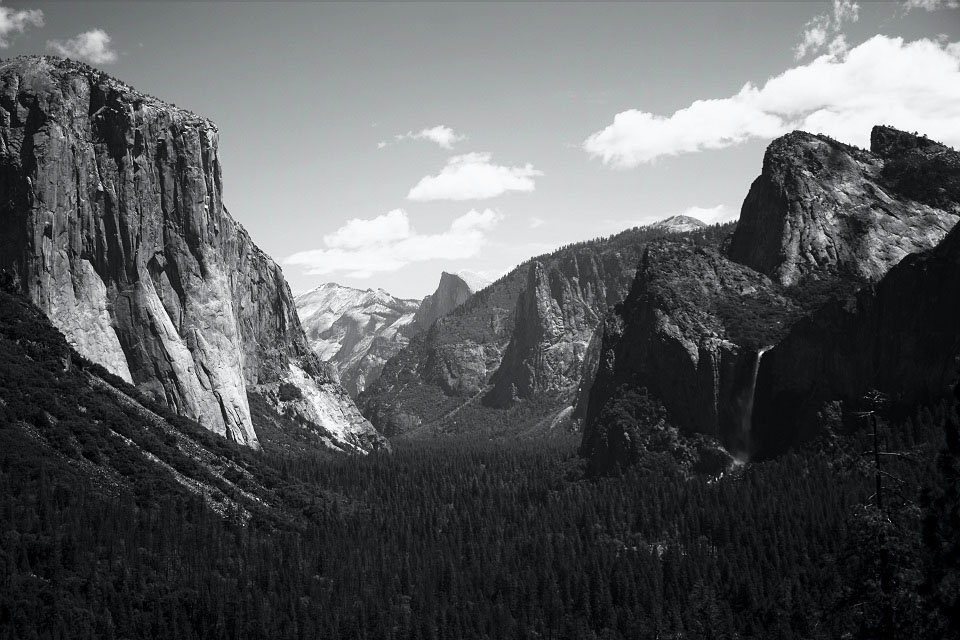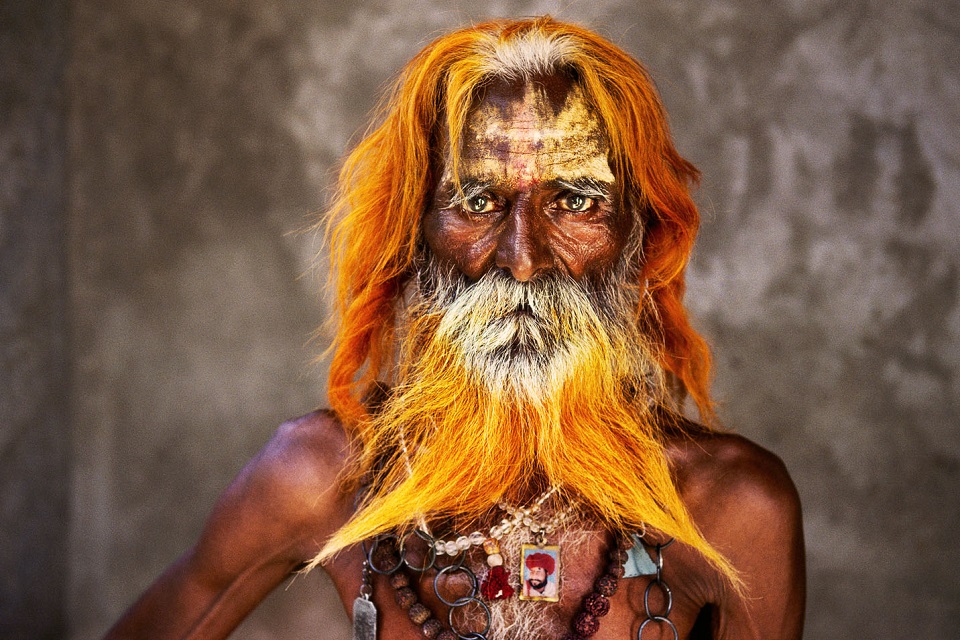
Famous Photographers: Capturing the World Through Their Lens
Introduction
Photography is an art form that allows us to freeze moments in time and capture the essence of the world around us. Throughout history, there have been numerous talented photographers who have left an indelible mark on the field of photography. In this article, we will delve into the lives and works of some famous photographers who have shaped the way we perceive the world through their lens.
1. Ansel Adams – Master of Landscape Photography
Ansel Adams, a true pioneer in the world of photography, is widely celebrated for his awe-inspiring landscape images that beautifully encapsulate the magnificence of the American West. Born on February 20, 1902, in San Francisco, California, Adams developed an early fascination with nature and the outdoors, which would later become the driving force behind his remarkable body of work.
Early Life and Passion for Nature
As a young boy, Adams suffered from a hyperactive and restless disposition, making traditional schooling a challenging experience for him. However, he found solace in exploring the wilderness and found his true classroom in the natural landscapes that surrounded him. Adams’ family often took trips to Yosemite National Park, which would become a profound source of inspiration for his future photographic endeavors.

The Birth of a Photographer
In the early 1920s, Adams purchased his first camera during a family trip to Yosemite. This small, simple Kodak Box Brownie marked the beginning of his lifelong journey as a photographer. He avidly honed his craft, experimenting with various techniques and developing a keen eye for composition.
Founding the Group f/64
In the 1930s, Adams joined forces with fellow photographers, including Edward Weston and Imogen Cunningham, to establish Group f/64. This collective of like-minded artists aimed to promote photography as a legitimate art form, advocating for sharp focus, precise detail, and a deep depth of field in their images. This approach was a departure from the soft-focus and pictorialist styles that were prevalent at the time.
Mastery of the Zone System
One of Adams’ most significant contributions to photography was the development and popularization of the Zone System. This technique allowed photographers to effectively control the exposure and tonal range in their images, ensuring that the final print matched the photographer’s artistic vision.
Iconic Images of the American West
Throughout his career, Ansel Adams captured numerous iconic images that have become synonymous with the American West. His photographs of Yosemite, Grand Teton, and Yellowstone National Parks evoke a sense of grandeur and reverence for nature’s beauty. “Moonrise, Hernandez, New Mexico” and “Clearing Winter Storm” are just a few of his famous works that continue to captivate audiences worldwide.
Environmental Advocacy
Beyond being a masterful photographer, Adams was also an ardent conservationist. He recognized the importance of preserving the natural world and used his images to advocate for environmental protection. His photographs played a pivotal role in the establishment of Kings Canyon National Park and the expansion of the Grand Canyon and Redwood National Parks.
Legacy and Influence
Ansel Adams’ work continues to inspire photographers and nature enthusiasts alike. His dedication to the craft, technical prowess, and deep connection with nature have left an indelible mark on the world of photography. His photographs serve as a timeless reminder of the beauty and fragility of our planet, urging us to cherish and protect the natural wonders that surround us.
In conclusion, Ansel Adams’ legacy as a master of landscape photography is a testament to the power of art in shaping our perception of the world. His stunning images serve as windows into the soul of nature, inviting us to contemplate the profound beauty of our planet.
2. Dorothea Lange – Documenting the Great Depression
Dorothea Lange, a pioneering documentary photographer, is best known for her powerful and poignant images that captured the harsh realities of the Great Depression. Born on May 26, 1895, in Hoboken, New Jersey, Lange’s photographic work would go on to become a defining portrayal of the struggles faced by Americans during one of the nation’s most challenging periods.
Early Life and Education
Dorothea Lange’s interest in photography began at an early age when she received her first camera at the age of 12. However, it wasn’t until she studied photography at Columbia University’s Teachers College that she realized her passion for the art form. She later moved to San Francisco, where she would spend much of her career.
The Great Depression and the Farm Security Administration
In the 1930s, the United States was plunged into the depths of economic hardship due to the Great Depression. In response to this crisis, the federal government established the Farm Security Administration (FSA) in 1935 to address the needs of struggling farmers and migrant workers. The FSA also commissioned photographers to document the living conditions and challenges faced by those affected by the economic downturn.

Digital Image © 2017 MoMA, N.Y.
“Migrant Mother” – A Symbol of Resilience
Lange’s most famous and enduring work is the photograph known as “Migrant Mother.” Taken in 1936, the image features Florence Owens Thompson, a 32-year-old mother of seven children, who was living in a pea picker’s camp in Nipomo, California. The photograph exudes a sense of despair and hardship, yet it also portrays a deep strength and determination in the face of adversity. “Migrant Mother” became an emblematic representation of the struggles endured by countless families during the Great Depression.
Humanizing the Great Depression
Dorothea Lange’s photographs humanized the impact of the Great Depression, providing a face and a story to the widespread suffering. Through her lens, she captured the dignity, resilience, and despair of the people she encountered during her travels across the country. Her images brought attention to the plight of migrant workers, sharecroppers, and displaced families, sparking empathy and awareness among the American public.
Challenges and Controversy
Lange’s work, while highly acclaimed today, was not without challenges and controversies during her time. Some government officials and agricultural leaders were critical of her photographs, as they felt the images painted a negative picture of the nation during a time when morale and optimism were desperately needed. However, Lange remained steadfast in her commitment to documenting the truth, even in the face of criticism.
Later Career and Legacy
Following her work with the FSA, Lange continued to be an active photographer, covering various social and political issues. During World War II, she documented the internment of Japanese-Americans, highlighting the injustice and discrimination they faced.
Dorothea Lange’s legacy as a documentary photographer remains unparalleled. Her ability to capture the essence of human suffering and resilience has made her an influential figure in the history of photography. Her images continue to be studied, admired, and celebrated for their honesty and profound impact on the world of photojournalism.
In conclusion, Dorothea Lange’s dedication to documenting the human experience during the Great Depression through her lens has left an enduring mark on the art of photography. Her work serves as a powerful reminder of the importance of bearing witness to the struggles of others and using photography as a means to foster compassion and social change.
3. Steve McCurry – The Eyes of Humanity
Steve McCurry is a world-renowned photographer known for his captivating and emotionally evocative images that offer a window into the lives of people from diverse cultures and backgrounds. Born on April 23, 1950, in Philadelphia, Pennsylvania, McCurry’s work has spanned decades and continents, earning him accolades and recognition as one of the greatest photojournalists of our time.
Early Life and Introduction to Photography
McCurry’s interest in photography was sparked during his college years at Pennsylvania State University. He began capturing images for the college newspaper, honing his skills and developing an eye for visual storytelling. After graduation, he embarked on a journey to India with his camera, setting the stage for his future career as a photographer.

Copyright: Steve McCurry
The Iconic Portrait: “Afghan Girl”
In 1984, while on assignment for National Geographic, McCurry captured what would become his most famous and iconic photograph: “Afghan Girl.” The haunting portrait of a young Afghan refugee with striking green eyes quickly became a symbol of the plight of refugees around the world. The image’s raw emotion and piercing gaze resonated with viewers and catapulted McCurry to international acclaim.
Capturing Human Emotion and Connection
Throughout his career, McCurry’s work has focused on portraying the universal human experience. Whether it’s the joy of a child’s laughter, the sorrow of a mother’s tears, or the determination of a hardworking laborer, McCurry’s photographs have a unique ability to connect with viewers on a deep and emotional level. His images transcend language and cultural barriers, offering a glimpse into the shared humanity that binds us all.
Extensive Travel and Exploration
McCurry’s photography has taken him to remote corners of the world, capturing the essence of cultures that might otherwise remain hidden to the outside world. From the bustling streets of India to the serene landscapes of Tibet and the war-torn regions of Afghanistan, his lens has documented moments of beauty, struggle, and resilience.
The McCurry Style – Color and Composition
One of the hallmarks of McCurry’s photography is his use of vibrant colors and strong compositions. His images often feature a juxtaposition of elements, creating a sense of harmony and visual storytelling. McCurry’s keen eye for detail and his ability to find beauty in the every day have made his work instantly recognizable.
Awards and Recognition
Over the years, McCurry has received numerous awards for his photography, including the Robert Capa Gold Medal, the National Press Photographers Association’s Magazine Photographer of the Year, and the Royal Photographic Society’s Centenary Medal. His contributions to the world of photojournalism have been celebrated and acknowledged by peers and audiences alike.
Continuing Impact
Steve McCurry’s photography continues to inspire and influence photographers and storytellers worldwide. His commitment to capturing the essence of humanity, even in the face of adversity, has left a profound mark on the world of photojournalism. McCurry’s work serves as a reminder of the power of visual storytelling to foster empathy, understanding, and compassion for our fellow human beings.
In conclusion, Steve McCurry’s photographic journey has been one of incredible exploration, compassion, and artistic brilliance. Through his lens, he has given a voice to the voiceless, celebrated the beauty of diverse cultures, and shed light on the shared human experience. His photographs serve as timeless reminders of the strength, resilience, and interconnectedness of humanity.
4. Annie Leibovitz – Master of Celebrity Portraits
Annie Leibovitz is a trailblazing photographer known for her iconic celebrity portraits and groundbreaking approach to capturing the essence of her subjects. Born on October 2, 1949, in Waterbury, Connecticut, Leibovitz’s career has spanned several decades, during which she has immortalized some of the most influential figures in the worlds of entertainment, politics, and art.
Early Career and Time at Rolling Stone Magazine
Leibovitz’s interest in photography began during her college years when she attended the San Francisco Art Institute. She honed her skills as a staff photographer for Rolling Stone magazine in the early 1970s. During this time, she developed a unique style that blended intimate portraiture with a storytelling narrative, capturing candid moments that revealed the true essence of her subjects.
Iconic Rolling Stone Covers
One of Leibovitz’s most significant contributions to photography was her work for Rolling Stone magazine. She was responsible for creating some of the magazine’s most memorable covers, including the iconic photograph of John Lennon and Yoko Ono taken just hours before Lennon’s tragic death. The image of the couple embracing has become a symbol of love and vulnerability.
Transition to Vanity Fair
In 1983, Annie Leibovitz joined Vanity Fair magazine, where she continued to showcase her exceptional talent for celebrity portraiture. Her images graced the covers and pages of the magazine, capturing the allure and essence of Hollywood stars and cultural icons. Her work at Vanity Fair further solidified her reputation as a master portraitist.
Intimate and Conceptual Portraiture
Leibovitz’s portraits are known for their intimacy and unique conceptualization. Her ability to connect with her subjects on a personal level allows her to capture their authentic emotions and vulnerability. Her portraits often transcend the traditional notion of celebrity photography, delving into the heart of her subjects’ personalities.
The “Disney Dream Portrait” Series
In collaboration with Disney, Leibovitz created the celebrated “Disney Dream Portrait” series, featuring famous celebrities reimagined as beloved Disney characters. The series brought together the magic of Disney storytelling with the allure of Hollywood stardom, creating visually stunning and whimsical images.
Awards and Recognitions
Throughout her illustrious career, Annie Leibovitz has received numerous accolades and awards for her contributions to photography and visual arts. She has been named a Living Legend by the Library of Congress and has been the recipient of the prestigious Pirelli Calendar Prize.
Personal Life and Legacy
Annie Leibovitz’s personal life has also been a subject of interest to the public. She has been open about her struggles and experiences, allowing her work to reflect her personal journey and growth as an artist. Her iconic portraits have not only immortalized her subjects but have also redefined the genre of celebrity photography.
Continuing Influence and Impact
Annie Leibovitz’s unique and visionary approach to photography has had a lasting impact on the field of portraiture. Her ability to capture the essence of her subjects, combined with her artistic vision and storytelling, has set a new standard for celebrity and portrait photography. Her images continue to inspire photographers and art enthusiasts worldwide.
In conclusion, Annie Leibovitz’s photographic legacy is characterized by her unmatched ability to connect with her subjects and create visually stunning portraits that transcend time. Her work has redefined celebrity photography, elevating it to an art form that celebrates the humanity and vulnerability of the people she captures through her lens.
5. Henri Cartier-Bresson – Pioneering Street Photography
Henri Cartier-Bresson, a French photographer widely regarded as the father of modern photojournalism, revolutionized the art of photography with his pioneering work in street photography and his concept of “the decisive moment.” Born on August 22, 1908, in Chanteloup-en-Brie, France, Cartier-Bresson’s remarkable ability to capture candid and fleeting moments has had a profound and lasting impact on the world of photography.
Early Life and Artistic Beginnings
Henri Cartier-Bresson’s early passion for art led him to study painting and drawing before eventually turning to photography. He acquired his first camera in 1929 while traveling through Africa, sparking his lifelong fascination with the medium. Cartier-Bresson’s early experiences as a painter heavily influenced his photographic approach, focusing on composition, geometry, and the visual narrative.
Founding Magnum Photos
In 1947, along with fellow photographers Robert Capa, David Seymour, George Rodger, and William Vandivert, Cartier-Bresson co-founded Magnum Photos, a cooperative agency that allowed photographers to maintain control over their work while also covering major world events. Magnum Photos became a symbol of excellence in photojournalism and documentary photography.

Credit: ©Henri Cartier-Bresson / Magnum
Copyright: ©Henri Cartier-Bresson / Magnum Photos
The Concept of “The Decisive Moment”
Cartier-Bresson’s concept of “the decisive moment” became the foundation of his photography and a fundamental principle in street photography. He believed that there was a singular moment when all the elements of a scene came together in perfect harmony, creating a powerful and meaningful image. This philosophy shaped his approach to photography, and he became a master at capturing those fleeting moments that revealed the essence of a situation.
Human Connection and Geometry
Throughout his career, Cartier-Bresson’s work demonstrated a profound connection to human subjects and their environments. He had an uncanny ability to capture genuine and unguarded moments of human emotion and interaction. His images often featured strong geometric compositions, showcasing his keen eye for balance and symmetry.
Travel and Documenting Global Events
Henri Cartier-Bresson’s photography took him around the world, where he documented significant events and cultural phenomena. From the Spanish Civil War to the liberation of Paris after World War II, his photographs captured pivotal moments in history with a deep sense of empathy and humanity.
Influence on Modern Photography
Cartier-Bresson’s pioneering work in street photography and his concept of “the decisive moment” had a profound influence on the development of modern photography. His approach to capturing spontaneous and authentic moments paved the way for generations of photographers to come. His images were not only aesthetically striking but also carried a profound narrative and social commentary.
Later Years and Legacy
In the latter part of his career, Cartier-Bresson shifted his focus from photography to other artistic pursuits, including drawing and painting. However, his photographic legacy continued to inspire and influence photographers worldwide. He received numerous awards and honors for his contributions to the world of photography, including the National Foundation for the Arts’ Presidential Medal of Freedom.
Conclusion
Henri Cartier-Bresson’s pioneering work in street photography and his concept of “the decisive moment” have left an indelible mark on the art of photography. His images continue to resonate with audiences, offering glimpses into the beauty, complexity, and humanity of the world around us. Cartier-Bresson’s ability to capture the fleeting and decisive moments of life remains an enduring source of inspiration for photographers seeking to tell compelling stories through their lens.
6. Diane Arbus – Exploring the Unconventional
Diane Arbus was an American photographer renowned for her unique and provocative portraits that explored the lives of individuals on the fringes of society. Born on March 14, 1923, in New York City, Arbus’s work challenged societal norms and provided a powerful and empathetic glimpse into the lives of those often overlooked or misunderstood.
Early Life and Artistic Beginnings
Diane Arbus came from a wealthy and intellectually curious family. Her parents owned a successful department store, and her upbringing exposed her to a world of creativity and artistic expression. In her early years, Arbus showed an interest in photography, and her fascination with capturing the human experience would become the driving force behind her iconic body of work.
Documentary Style and Candid Portraiture
Arbus’s photography style was deeply rooted in documentary and street photography. She approached her subjects with a profound curiosity and openness, seeking to unveil the essence of their lives without judgment or sensationalism. Her images often featured candid and unposed portraits, showcasing the raw and unfiltered emotions of her subjects.
Embracing the Unconventional
One of Arbus’s most significant contributions to photography was her ability to seek out individuals living unconventional lives and portray them with dignity and humanity. Her subjects included people with physical deformities, individuals from marginalized communities, cross-dressers, circus performers, and others on the outskirts of societal norms. Through her lens, Arbus highlighted the beauty and complexity of human diversity.
Rise to Prominence
Arbus gained recognition in the 1960s and 1970s for her thought-provoking and often controversial images. Her work was featured in prestigious art galleries, and she became one of the few photographers to exhibit at the Museum of Modern Art in New York City.
Influence on Photography and Art
Diane Arbus’s unflinching and empathetic portrayal of unconventional subjects has had a lasting impact on the world of photography and art. Her photographs challenged conventional notions of beauty and normalcy, encouraging viewers to question their perceptions and biases. Arbus’s work continues to inspire contemporary photographers and artists to explore the human experience with honesty and vulnerability.
Personal Struggles and Tragic End
Despite her professional success, Diane Arbus faced personal struggles, including battles with depression. Tragically, she took her own life on July 26, 1971. Her death shocked the art world and left a void in the field of documentary photography.
Posthumous Recognition and Legacy
Following her passing, Diane Arbus’s work continued to gain critical acclaim and recognition. Her photographs have been exhibited worldwide and have become iconic representations of human individuality and complexity. The Diane Arbus Archive was established to preserve and promote her work, ensuring that her artistic legacy endures for generations to come.
Conclusion
Diane Arbus’s photography is a testament to the power of art in shedding light on the lives of those who exist on the outskirts of societal norms. Through her lens, she captured the humanity and individuality of her subjects, offering a glimpse into their worlds with compassion and empathy. Her work challenges viewers to embrace diversity, celebrate uniqueness, and question preconceived notions about beauty and normalcy. Diane Arbus’s legacy as a groundbreaking photographer will forever influence and inspire the way we perceive and portray the human experience.
7. Sebastião Salgado – A Voice for the Dispossessed
Sebastião Salgado is a Brazilian photographer renowned for his powerful and emotive black-and-white images that bring attention to the struggles and triumphs of marginalized communities and the natural world. Born on February 8, 1944, in Aimorés, Brazil, Salgado’s photography captures the essence of humanity and the environment with profound compassion and depth.
Early Life and Career Shift
Before embarking on his photography career, Sebastião Salgado earned a degree in economics and pursued a career as an economist. However, in the early 1970s, he transitioned to photography, beginning his journey as a self-taught photographer. His passion for photography would lead him to document the human condition in all its complexity.
Humanitarian and Social Documentaries
Salgado’s photography is often described as a humanitarian and social documentary. He travels to some of the most remote and challenging regions of the world to capture images that shed light on the plight of marginalized communities and the impact of globalization on traditional societies.
“Workers” – A Testament to Labor and Dignity
One of Sebastião Salgado’s most famous series is “Workers,” where he presents a striking and intimate portrayal of laborers from around the world. The images capture the dignity, hardships, and resilience of individuals toiling in various professions, from manual laborers to miners and factory workers.

“Genesis” – Celebrating the Natural World
In contrast to his documentation of human struggles, Salgado’s series “Genesis” showcases the pristine beauty of the natural world. He captures awe-inspiring landscapes, wildlife, and remote cultures that remain untouched by modernity, presenting a poignant call for environmental conservation and respect for our planet.
Co-Founding Amazonas Images and Instituto Terra
Sebastião Salgado co-founded Amazonas Images, a photography agency dedicated to showcasing his work and supporting documentary photography. Additionally, in collaboration with his wife, Lélia Wanick Salgado, he established the Instituto Terra, a non-profit organization focused on reforestation and ecological restoration in the Atlantic Forest of Brazil.
Awards and Recognition
Throughout his career, Sebastião Salgado’s work has earned numerous awards and accolades, including the W. Eugene Smith Memorial Fund Grant and the Prince of Asturias Award for the Arts. His photographs have been featured in prestigious art galleries and museums worldwide.
Documentary Film: “The Salt of the Earth”
In 2014, a documentary film titled “The Salt of the Earth,” directed by Wim Wenders and Juliano Ribeiro Salgado (Sebastião’s son), was released. The film provides an intimate look into Sebastião Salgado’s life, career, and the stories behind some of his most significant photographs.
The Power of Visual Storytelling
Sebastian Salgado’s photography goes beyond mere images; it is a form of visual storytelling that seeks to ignite compassion, empathy, and understanding. Through his lens, he gives a voice to the dispossessed and encourages viewers to confront the challenges faced by marginalized communities and the environment.
Conclusion
Sebastião Salgado’s photography is a testament to the transformative power of images. With compassion and sensitivity, he brings attention to the human condition and the natural world, urging us to reflect on our shared responsibility to protect and preserve the planet and the dignity of all its inhabitants. His work serves as a call to action, encouraging us to confront social and environmental issues and to strive for a more just and sustainable world.
8. Helmut Newton – Provocative and Controversial
Helmut Newton was a German-Australian photographer celebrated for his provocative and groundbreaking work in fashion and portrait photography. Born on October 31, 1920, in Berlin, Germany, Newton’s photography pushed boundaries and challenged conventional notions of beauty, sexuality, and power.
Early Life and Career Beginnings
Helmut Newton’s interest in photography began during his youth, and he purchased his first camera at the age of 12. However, his career in photography truly flourished after he fled Nazi Germany in 1938 and settled in Australia. He worked as a photographer for the Australian Army during World War II before moving to fashion photography in the 1950s.
Bold and Provocative Style
Newton’s photography was characterized by its boldness and provocativeness. He had a unique ability to capture his subjects in ways that challenged traditional notions of beauty and sexuality. His images often featured strong and confident women, portrayed with a sense of empowerment and control.
Pioneering Fashion Photography
Helmut Newton’s work in fashion photography was revolutionary. He introduced a new and daring aesthetic that deviated from the more conservative styles prevalent at the time. His photographs for top fashion magazines, including Vogue, Harper’s Bazaar, and Elle, reshaped the industry and became iconic representations of the era.
Famous “Big Nudes” Series
One of Newton’s most famous series is “Big Nudes,” which featured larger-than-life black-and-white images of nude women. The series challenged societal norms and presented female nudity in a bold and unapologetic manner. Newton’s photographs explored themes of sexuality, power, and dominance.
Impact on the Fashion Industry
Helmut Newton’s daring and boundary-pushing photography significantly impacted the fashion industry. He brought a new level of sophistication and sensuality to fashion photography, revolutionizing the way fashion was presented and perceived.
Controversies and Criticism
While Newton’s work earned him acclaim and recognition, it was not without controversy. Some critics accused him of objectifying women in his photographs and promoting an overly sexualized representation of femininity. However, Newton defended his work, stating that he aimed to portray women as strong and empowered individuals.
Later Career and Legacy
Helmut Newton continued to work prolifically throughout his life. He received numerous awards and honors for his contributions to photography and was appointed Officer des Arts et des Lettres by the French government. He passed away on January 23, 2004, in a car accident in Los Angeles.
Enduring Influence
Helmut Newton’s influence on fashion and portrait photography remains profound. His daring and unconventional style continues to inspire photographers and artists worldwide. His images have become iconic representations of an era that challenged societal norms and celebrated individuality and self-expression.
Conclusion
Helmut Newton’s photography was a bold and fearless exploration of the human form, fashion, and society’s perceptions of beauty and power. His provocative and controversial images challenged viewers to confront their assumptions and biases about gender, sexuality, and identity. Newton’s work left an indelible mark on the world of photography, pushing the boundaries of artistic expression and paving the way for a new era of fashion photography.
9. Edward Weston – Celebrating Form and Texture
Edward Weston was an influential American photographer known for his pioneering work in the field of modernist photography. Born on March 24, 1886, in Highland Park, Illinois, Weston’s photographs celebrated the beauty of natural forms and textures, making him one of the most significant photographers of the 20th century.
Early Life and Artistic Beginnings
Edward Weston’s interest in photography began at an early age when his father gave him a Bull’s Eye #2 camera. He started experimenting with photography and later pursued it as a career. In the early 1900s, Weston moved to California, where he fell in love with the diverse landscapes that would become a central focus of his work.
Pictorialism to Modernism
In his early years as a photographer, Edward Weston embraced the pictorialist style, which was popular at the time. Pictorialist photographers aimed to create images that resembled paintings, often employing soft focus and manipulation techniques. However, as Weston’s career progressed, he veered away from pictorialism and embraced a more modernist approach to photography.

Arizona Board of Regents / Artist Rights Society (ARS), New York Creator: Don Ross
Straight Photography and Precisionism
Weston became a prominent advocate of “straight photography” and Precisionism. Straight photography rejected the use of artistic manipulation and sought to present subjects in a clear and unadulterated manner. Precisionism focused on the precise depiction of form and structure in the subject matter.
Nature and Still Life Photography
Edward Weston’s photographs often featured natural objects and still life subjects, such as shells, vegetables, and rocks. He had a keen eye for finding abstract patterns and captivating textures in everyday objects, elevating them to works of art through his masterful use of composition and lighting.
The Pepper No. 30
One of Edward Weston’s most iconic and celebrated images is “The Pepper No. 30,” taken in 1930. The photograph portrays a close-up view of a bell pepper, revealing its intricate details and textures. This image has become a symbol of Weston’s ability to find beauty in the simplest of forms.
Group f/64
Edward Weston was a founding member of Group f/64, a collective of influential photographers that included Ansel Adams, Imogen Cunningham, and others. The group championed straight photography and Precisionism, rejecting the prevailing soft-focus and manipulated styles of the time.
Weston’s Influence
Edward Weston’s work and philosophy had a profound influence on the world of photography. His emphasis on form, texture, and clarity inspired generations of photographers to explore the inherent beauty of natural subjects and to pursue photography as a medium of artistic expression.
Later Life and Legacy
In the later years of his life, Edward Weston faced health issues, but he continued to photograph until his death on January 1, 1958. His legacy lives on through his extensive body of work, which remains highly influential and celebrated in the world of photography.
Conclusion
Edward Weston’s photography celebrated the inherent beauty of natural forms and textures, elevating everyday objects to the status of fine art. Through his mastery of composition and lighting, he revealed the captivating intricacies of subjects often overlooked. Weston’s commitment to straight photography and Precisionism made him a trailblazer in the world of modernist photography and left a lasting impact on the medium. His images continue to inspire photographers and art enthusiasts, inviting them to appreciate the richness of form and texture found in the world around us.
10. Cindy Sherman – A One-Woman Show
Cindy Sherman is an American photographer and artist renowned for her groundbreaking and thought-provoking self-portraits, where she transforms herself into a diverse array of characters. Born on January 19, 1954, in Glen Ridge, New Jersey, Sherman’s photography challenges societal norms, explores the complexities of identity, and redefines the concept of self-representation in art.
Early Life and Artistic Beginnings
Cindy Sherman’s interest in art and photography began during her college years at the State University of New York at Buffalo. Initially studying painting, she soon found her true passion in photography. Sherman’s early works already exhibited her fascination with the art of disguise and assumed roles, a theme that would become central to her later self-portraits.
“Untitled Film Stills” – A Pioneering Series
One of Cindy Sherman’s most groundbreaking series is “Untitled Film Stills,” created between 1977 and 1980. In this series, she portrayed herself as various female characters inspired by the aesthetics of classic Hollywood and film noir. These staged self-portraits represented the stereotypes and clichés of women in popular culture, while also questioning the boundaries between reality and fiction.
Challenging Gender Norms and Identity
Throughout her career, Cindy Sherman continued to challenge traditional gender norms and the notion of a fixed identity through her self-portraits. She often assumed personas that defied conventional expectations, examining the constructed nature of femininity and the fluidity of self-representation.

Alle Rechte vorbehalten. Bitte beach
Disguise and Transformation
Cindy Sherman’s photography is characterized by her masterful use of disguise and transformation. Through costumes, wigs, makeup, and prosthetics, she seamlessly becomes a wide range of characters, from historical figures to fictional personas. This transformative process allows her to explore various archetypes and personas within the realm of her own identity.
Critique of the Art World
Sherman’s work is not only a reflection on identity but also serves as a critique of the art world and the male-dominated gaze that has historically objectified women in art. Her self-portraits challenge the notion of the passive female muse and place the artist herself in control of her representation.
Wide-Ranging Influences
Cindy Sherman’s work is deeply influenced by the worlds of film, literature, and popular culture. She draws inspiration from a myriad of sources, reimagining and subverting familiar characters and tropes to create her powerful and enigmatic self-portraits.
Recognition and Legacy
Cindy Sherman’s contributions to the world of art and photography have earned her widespread recognition and numerous awards. Her work has been exhibited in prestigious galleries and museums worldwide, cementing her status as one of the most influential artists of her generation.
Beyond the Self-Portraits
While Cindy Sherman is best known for her self-portraits, she has also explored other themes and mediums in her art. She has worked with various styles of photography, including fashion and still life, and has delved into sculpture and film.
Continuing Impact
Cindy Sherman’s impact on contemporary art and photography remains profound. Her self-portraits have inspired countless artists to explore themes of identity, representation, and the performative nature of self. Her work continues to provoke discussions and challenge perceptions, reaffirming the power of art as a medium for introspection and societal reflection.
Conclusion
Cindy Sherman’s photography is a tour de force in the world of contemporary art. Through her captivating and transformative self-portraits, she invites viewers on a journey of introspection and contemplation. Her ability to embody a myriad of personas challenges the notion of fixed identity, encouraging us to question our own assumptions about ourselves and others. Cindy Sherman’s one-woman show is an ever-evolving exploration of the human experience, demonstrating the boundless possibilities of artistic expression and the power of self-representation in shaping our perceptions of the world around us.
Last words
The world of photography has been shaped by the vision and creativity of these famous photographers. Their ability to capture emotion, document history, and challenge societal norms through their images has left an enduring legacy. Their works continue to inspire and influence photographers and art enthusiasts alike.
Frequently Asked Questions
1. What makes a photographer famous?
Famous photographers often gain recognition for their unique style, powerful storytelling, and the impact of their work on society and the art world.
2. Are famous photographers self-taught or formally educated?
Both paths exist. Some famous photographers are self-taught, while others have formal education in photography or related fields.
3. How can I improve my photography skills?
Practice, experiment, and study the works of renowned photographers. Take workshops and seek constructive feedback to grow as a photographer.
4. Can photography be a lucrative career?
Yes, photography can be a lucrative career, especially in areas like fashion, advertising, and documentary photography.
5. Where can I see famous photographers’ work?
You can find famous photographers’ work in art galleries, museums, photography books, and online platforms showcasing photography collections.



